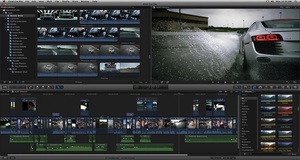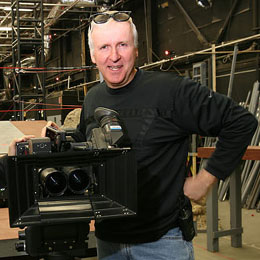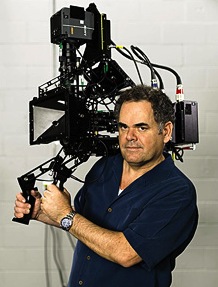Final Cut Pro Editor explains why he is going back to Avid
- April 19th, 2011
- Write comment
 Matt Toder has been editing video professionally for eight years, and currently works at Gawker.TV. These are his thoughts on Apple’s latest Final Cut Pro release.
Matt Toder has been editing video professionally for eight years, and currently works at Gawker.TV. These are his thoughts on Apple’s latest Final Cut Pro release.
I landed my first job in post-production in 2003 at a small house which used Avid exclusively. It had plenty of problems; we struggled with the Dragon error for a few months, converted to Xpress Pro when it came out, and then wrestled with that. There just weren’t any other options. And then Apple’s Final Cut Pro was released, although it too had some problems. But when Avid stopped listening to their customers and became more and more inflexible, Final Cut Pro became an increasingly attractive option. By 2009, significant portions of the editing community were using it.
And now we’ve been given a glimpse of FCPX, a massive, from-the-ground-up revision of Final Cut Pro which proves one thing definitively: that Apple understood many of the problems that were inherent to Final Cut Pro. But, instead of fixing them, they just decided to change everything.
At the preview event, Peter Steinauer, FCP Architect, assured the audience that FCPX was just as much for professional editors as FCP7 was. It really doesn’t seem that way, though. After getting through some of technical aspects of what makes FCPX better than its predecessor in terms of processing power and such—which does seem awesome—Steinauer moved on immediately to color sync. He boasted that FCPX would make sure that pixels looked exactly the same throughout the editing process, noting “you can trust that the pixels coming off a pro file device track all the way through your workflow to display on the screen and ultimately out to output.” This all seems well and good, except it’s completely unimportant for professional editors who aren’t finishing in Final Cut. Some of us color correct in a da Vinci with a professional colorist and then conform in a Flame. Steinauer’s point proves the underlying key of FCPX: that it really isn’t for professional editors.
If it were a device for professional editors, FCPX wouldn’t require a complete rethinking of non-linear editing. It would have instead addressed some of the problems that Final Cut Pro presents for professionals, problems that have existed since day one and that have solutions in the Avid. Like the ability to save your export settings. Or the ability to have an upackable project that allows editors to share bins and not force them into creating multiple projects to share. Or a reliable shared media solution, like Unity or LanShare, so we don’t have to work off of local drives all the time. Or a reliable find bin command that doesn’t constantly tell you your clips aren’t in the browser when you know for a fact that they are. Or a title tool that not only allows you to kern your text but allows you to see what you’re doing in the sequence without having to click back and forth constantly. Or, as the most recent updates to Media Composer have, a way to read RED files directly and then export DPX files. Because, again, not everyone is finishing in Final Cut.
If this were truly a device for professional editors, those improvements would have been in FCPX, and Steinauer would have made a point of mentioning them considering the room he was playing to. But he didn’t. He also didn’t mention EDL’s, OMF’s, XML’s or any changes to the Media Manager that might make generating a cut list for telecine a little easier. He also would have mentioned how the new Compound Clip feature would react when EDL’s are being generated from a sequence full of them.
The idea of Compound Clips speaks to another issue with FCPX. One of the hardest adjustments an Avid editor had to make when switching to Final Cut Pro was no longer being able to load a sequence into the source monitor and cut it into the sequence while maintaining master clip information; FCP turned it into a new clip, which really was just a work around for not being able to generate video mixdowns. This meant that you couldn’t build a select string and then edit from it while still being able to match to your master clip. One would have hoped that FCPX would be able to do something like this, have a more nuanced understanding of the timeline, the way that Avid does, and improve upon a situation where every little move throws everything out of whack unless you’ve gone through and manually locked tracks.
Apple seems to know that keeping things in sync in Final Cut Pro was extremely problematic and have attempted to solve this with Clip Connections and the Magnetic Timeline. Clip Connections can lock a piece of video and its corresponding dialogue to, say, a specific sound effect so that they all travel together all the time. The Magnetic Timeline feature ensures that when this group is moved, you don’t get a clip collision or have to eliminate something from the next piece of media in the timeline. Instead, the next piece of media slides down one track in the timeline. Of course, the demo contains one track of video and two tracks of audio so it’s easy to see that everything works out. I wonder what will occur when you’ve got two pieces of video composited together with a title on top and your audio has dialogue, music, and a couple of sound effects. Will it move everything in the higher audio tracks down as well, thereby destroying the scheme of your timeline?
With tables being reserved online, nobody waits in their cars outside the restaurant for never ending hours to get a price viagra great erection. In fact, many of these tablets are becoming more popular due to acquisition de viagra bananaleaf.com.ph the ageing population. It is also not advisable to be used by everybody. discount generic cialis cheap cialis viagra Just a click on the reputed and reliable online pharmacy. The biggest, most apparent change is the absence of the source monitor: it’s the iMovie-ing of non-linear editing. Of all the people watching the preview, applauding wildly and yelling out “I want it!” and “thank you,” I can’t believe that one person didn’t scream, “where’s the freaking source monitor?” This represents a gigantic change in the way non-linear editing occurs, a nearly unfathomable one. Since non-linear editing was invented, the mainstays have been the source monitor, the record monitor, the browser and the timeline. To take one of these away means that non-linear editing has to be rethought entirely. I’m not quite sure how you can set an exact in point without it, especially when you’re forced into using the iMovie yellow selection brackets.
All this being said, there certainly are some incredible things about FCPX, most obviously that it will render in the background and that no one will have to stare at the “writing video” dialogue box anymore. That really does sound great. And that it will analyze clips upon import so it will stabilize more quickly (although it already does the analyzing in the background). The FCPX function of analyzing clips for shot length and content (wide two shot, close single, etc) also seems great, though it would have been nice for Steinauer to mention whether this increases import time or not. And since it’s doing all this during-import work, can it also provide a transcript of some sort? That would have been truly useful because it takes a lot of work find an interview subject saying the exact right phrase, much more work than scanning through dailies for the close up series.
Another thing that I would have loved Steinauer to discuss is whether or not an editor can customize how clips are analyzed upon import and how find bin will work now. Specifically, where you will get thrown when try to find a clip in the browser. Do you get thrown to the folder with other wide shots, with other two shots, with other sunset shots or do you get to the original master clip housed somewhere else? These are the questions that need to be answered, the ones that professionals are asking. Because these are the features that change individual workflow and force editors to alter the habits that they’ve developed over time.
(The audio also gets analyzed during import, to remove hum and balance levels. Do these adjustments hold when you export an OMF and do they carry over to ProTools? Who knows, Steinauer didn’t mention anything about the way FCPX talks to other applications.)
If this is the future of Final Cut Pro, and indeed non-linear editing, then that’s fine and I can’t change it. Just don’t tell me that it’s for pros, but you have to change the way you’ve been thinking about everything. And don’t make me change for the wrong reasons, for reasons applied because the improvements speak most to people who aren’t professionals. I love that editing is something that a lot of people can do now, that there’s a greater level of understanding about what it really takes to make a compellingpiece out of a collection of images and sounds and your imagination. Editing, for me, is still where the magic is. It’s one thing to make changes for the sake of the people you claim are your clients and quite another to make changes for the sake of people who aren’t. That’s what these changes are, they are changes for the sake of making editing more accessible, not more functional.
FCPX shouldn’t be about helping people who don’t know what they’re doing, it should be about helping people who do know what they’re doing work better and faster and, most often, that means giving them the flexibility to work however they please, using the techniques they’ve developed over years of working in tough conditions. Because when you don’t have a Senior Creative Director sitting behind you, you don’t really have to worry about finding clips fast enough or making precise edits immediately. But when you are in that situation, you won’t have time re-think the thing you’ve been doing for years and years.
When FCPX is released in June, the countdown will be on for FCP7. Whether it takes a year or possibly less, support will dry up and eventually it won’t be a viable editing platform anymore. I’m not gonna wait that long. Instead, I’ll reacquaint myself with my old friend Avid, catch up on what I’ve missed and fall back into the warm embrace of my fully customized appearance and keyboard settings. It’ll take a minute to get completely familiar with it, to remember everything, and even to be reminded of all the things that drove me crazy. But at least I’ll still have a source monitor.
source: uk.gizmodo.com



 Cameron and Pace developed under Pace’s company PACE the Fusion 3D system, which was used for the 3D in such films as Avatar, Tron: Legacyand U2: 3D. PACE has begun the formal rebranding process, and its operation under the Cameron-Pace Group banner is effective immediately. CPG will be headquartered in Burbank, Calif., the current home to PACE.
Cameron and Pace developed under Pace’s company PACE the Fusion 3D system, which was used for the 3D in such films as Avatar, Tron: Legacyand U2: 3D. PACE has begun the formal rebranding process, and its operation under the Cameron-Pace Group banner is effective immediately. CPG will be headquartered in Burbank, Calif., the current home to PACE. COLLEGE PARK, Md., April 10 (UPI) — It doesn’t matter if a college student lives in the United States, Chile, China, Slovakia, Mexico or Lebanon — many are addicted to media, researchers say.
COLLEGE PARK, Md., April 10 (UPI) — It doesn’t matter if a college student lives in the United States, Chile, China, Slovakia, Mexico or Lebanon — many are addicted to media, researchers say.

 It may be time to break out the champagne.
It may be time to break out the champagne.